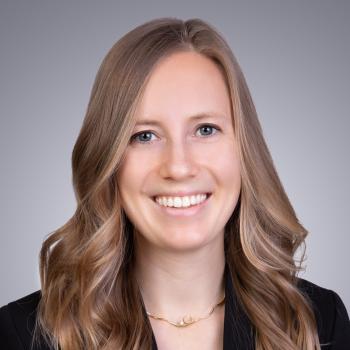Surgical Volume Bounced Back After Initial COVID Drop
Despite the surge in late 2020, a study by Stanford researchers shows just a 10% drop in procedures from 2019 levels.
On March 13, 2020, as the COVID-19 hospitalizations and deaths were mounting, President Donald Trump declared a national emergency that led to a shutdown of all nonessential activities, including healthcare services. The precipitous drop in healthcare services was noted at the time and has been documented since. The financial consequences of the contraction were also evident: provider who weren’t providing services saw their revenues plummet and payers experienced an unprecedented drop in claims and spending.
But now researchers are beginning to collect and analyze data about what happened to healthcare services in the period after those first weeks of a quasi-shutdown.
Aviva Mattingly

A team of Stanford researchers led by Aviva Mattingly reported findings this week in JAMA Network Open that show, as one might expect, a sharp drop in the number of surgical procedures in March and April of 2020. Sifting through a Change Healthcare claims database that includes every state except Vermonth, they found that in 2019, from March 15 through May 2, there were 905,444 procedures performed. During the same period in 2020, 458,469 were performed, a 48% decrease,
But they also looked at the period from October 22, 2020, through January 31, 2021, when COVID-19 cases and hospitalization started to go up again. However, during that surge, the overall number of procedures — 756,377 — closely matched the number of procedures performed during the same period the year before — 797,510. That is just a 3% difference. For the year, there were 10.2% fewer procedures (678,348) in 2020 than in 2019.

There were a couple of exceptions to the rebound during the surge. There were 30% fewer ear, nose and throat procedures performed during the surge compared with the same period in 2019 and 9.4% abdominal hernia repairs.
The Stanford researchers noted that there was no relationship between surgical volume and local COVID-19 burden. They said the lack of a connection suggests that COVID-19 patients were probably not the strong factors in determining surgical volume. “Rather,” wrote Mattingly and her colleagues, “these findings suggest that health systems’ surgical services responded effectively, and hospitals adapted elective surgical procedure policies based on local needs and resources.”
They noted that infection control procedures were associated with the near disappearance of nosocomial transmission and infections among healthcare workers.
Latest Vaccines and Antiviral Treatments Show Promising Results in Reducing Severe COVID Outcomes
March 7th 2024It was found in a recent study that the updated Moderna, Pfizer-BioNTech and Novavax COVID-19 vaccines, when combined with antiviral treatments like nirmatrelvir and molnupiravir, can significantly decrease the chances of hospitalization and death from current COVID-19 variants.
Read More
In this episode, Peter Wehrwein, managing editor of Managed Healthcare Executive, speaks with Dr. Rodrigo Cerda. Dr. Cerda has been recently promoted to the position of senior vice president of health services and chief medical officer of Independence Blue Cross in Philadelphia. He is also a member of Managed Healthcare Executive’s editorial advisory board. Peter and Dr. Cerda discuss his new role at the Independence Blue Cross, what it means to be a chief medical officer at an insurer these days, valued-based care, social determinants of health, and, of course, the pandemic.
Listen
How More Prompt Action Could Have Saved Thousands of U.S. COVID-19 Deaths
December 10th 2023Researchers of a study compared Israel's CVOID-19 booster rollout experience to the United States to ask the question: How many lives could the U.S. have saved if boosters were authorized sooner?
Read More
Briana Contreras, associate editor of MHE, spoke with Dr. Maria Hernandez, founder and CEO of Impact4Health. Maria shared not only how healthcare inequities remain to be an issue and what needs to be addressed, but also the progress that has been made over time through awareness, conversations and laws, especially due to the heightened awareness of inequities caused from the COVID-19 pandemic and the tragic deaths of George Floyd, Breonna Taylor and many more - which have now occurred over a year ago.
Listen
A Cup or Two of Joe a Day Could Keep COVID-19 Infection Away
November 19th 2023Coffee, rich in polyphenolic compounds like chlorogenic acid (CGA), caffeic acid (CAA), cafestol, melanoidins and trigonelline, has been recognized as a dominant source of CGA in various studies. Previous studies suggest that CGA in coffee can positively impact blood pressure, lipid profile, glycemia and insulin resistance.
Read More
The Challenges, Strategies of COVID-19 Misinformation Interventions
November 16th 2023COVID-19 misinformation interventions should involve public health experts, establish consistent outcome measures and more to address health misinformation at individual, community and systems levels, according researchers of a recent study.
Read More